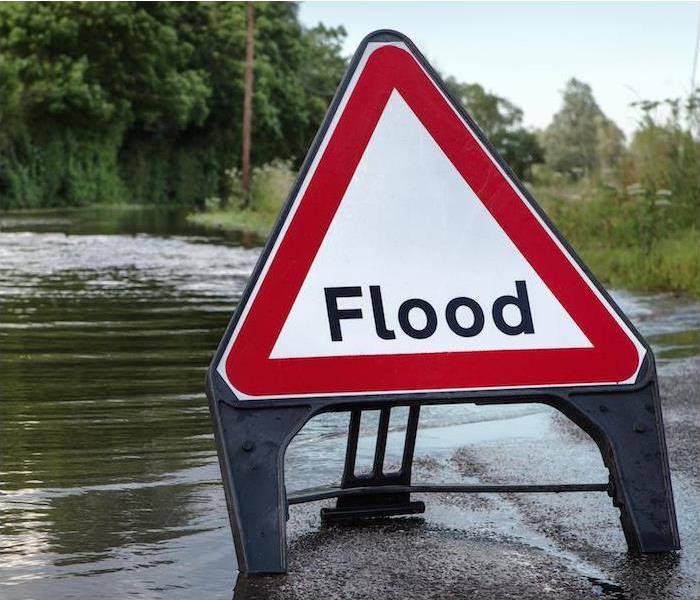What to Know About Flooding Types and Causes | SERVPRO® of Manistee, Ludington and Cadillac
4/18/2022 (Permalink)
Did you know? Flooding is the most common natural disaster, claiming more lives in the United States per year than hurricanes, tornadoes or lightning. Floods affect everything from a single property to an entire city.
All 50 states and every U.S territory is affected by flooding. Flooding events in each part of the nation can carry different degrees of severity, but there are still similarities in the types of floods and the casualties experienced. There are three common types of floods, and four common causes.
Flash floods are a common form of flooding resulting from a storm moving into an area with heavy amounts of rain. Soil becomes overwhelmed with moisture, and excess water creates runoff that can carry away small or large objects.
River floods are events that occur when a river becomes too full and water begins to spill over into its banks. As the water pushes past the boundaries of the river, it leaves behind a path of destruction.
Coastal floods happen near large bodies of water. Cyclonic activity, storm surge and rising tides result in flooding that can create wide swaths of damage.
Heavy rainfall. We have certainly had our share of heavy rain in Michigan, and here in our Manistee neighborhoods, that can equal flooding along the river. Both river flooding and flash floods have wreaked havoc in our towns in the past as storms with extreme amounts of rain move through. Urban areas tend to experience these kinds of flooding more often due to lack of soil and more asphalt and concrete.
Oceanic activity. While Lake Michigan gives us a taste of shoreline flooding, those areas of our nation that border the ocean or gulf experience weather events such as hurricanes, storm surge and rising tides. These events can cause catastrophic flooding and result in extreme damage. We have seen firsthand the damage that water can cause to our own beaches and lake-bordering towns.
Dams and levees failing. The most memorable and devastating example of a levee breaking was in 2005 during Hurricane Katrina. Dams and levees break when they are cracked or under extreme pressure from storm surge and they can no longer hold water back. This breach causes disastrous flooding and monumental damage.
Snowmelts and ice dams. Our prolonged freezing temperatures and heavy amounts of snow over the winter can lead to another danger as things begin to warm up. Snowmelt has consistently increased flooding in our towns as well as led to ice dams in our rivers. Ice dams or ice jams are a common occurrence here as ice is forced downstream creating a block in the river and forcing water to spill over. Relief from the cold temperatures is always appreciated, but we also have to be prepared for the damage our melting winter precipitation can cause.
Regardless of the cause of the flooding, SERVPRO of Manistee, Ludington and Cadillac has the tools and teams to help your home or business recover from its disastrous effects. Contact us anytime when flooding or water damage makes a mess in your life.






 24/7 Emergency Service
24/7 Emergency Service
